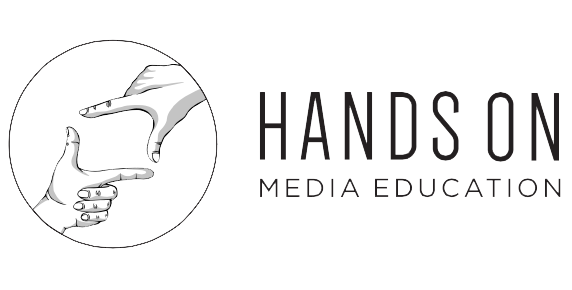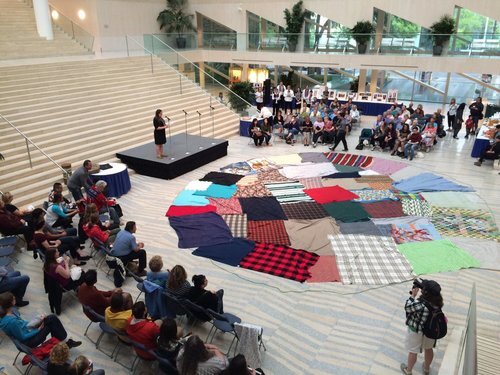Educating Our Unknowing
We often think of social media as a superficial, easy-breezy mode of communication. And in some ways, that might be true. But as I learned this week, the way we choose to engage, interact, and produce content on our social media platforms can also hold a lot of meaning - some of it conscious, some of it not, but all of it a distilled imprint of our education, our background, our culture, and all of the unseen factors that influence the lens we see the world through.
Image source: University of British Columbia, Dialogue on Canada’s Truth and Reconciliation Commission, 2013
This being National Indigenous History Month, my first week as Social Media Coordinator at Hands On Media Education coincided with National Indigenous Peoples Day (NIPD), celebrated on June 21st. Knowing that it was an important day to acknowledge and highlight, I was eager to spread the word on HOME’s social media platforms. But shortly after I started skimming the Internet for images and piecing words together, something just felt off.
As a white, non-Indigenous Canadian, the task of writing about a day, a month, a celebration that isn’t mine made me confront my own “whiteness”, and along with it, my privilege and my own unknowing when it came to articulating the importance of a day like NIPD. How do I write about this? *Should* I be writing about this? What do I actually know about this day? Can I post an image of a pow wow? Is that appropriate?
Walk for Reconciliation through downtown Vancouver, September 2013. Image from the TRC Final Report.
The task proved harder than I expected. I wasn’t sure how to approach it, what to say, and how to say it. As it turns out, the experience was an important part of an ongoing learning curve. It was uncomfortable, but it was necessary. Despite my background in History, my interest in the news and Indigenous issues, I still had a lot to learn. I’ll always have a lot to learn.
It also made me realize that I likely wasn’t alone. There were probably a lot of people who felt that they didn’t have the knowledge or the words to navigate Indigenous histories, heritage, cultures, and the difficult but crucial issues surrounding the legacy of the residential school system and the lasting impacts of colonisation. It is important that we resist mitigating the discomfort of our own ignorance by avoiding the topics altogether; it is such a crucial and exciting time for Indigenous voices, with landmark movements such as “Idle No More”, the publication of the Truth and Reconciliation Commission report and the UN Declaration on the Rights of Indigenous Peoples, the global emergence of several Indigenous-led organisations, not to mention the string of recent award-winning documentary films made by Indigenous, Métis, and Inuit filmmakers. They are but a few examples of the momentum that has been building, carving a place for Indigenous voices and perspectives.
Hands On Media workshop - Bennet Field, Northwest Territories, 2017
We each have a role to play in reconciliation, to acknowledge our history, and to work together towards a better and more informed future. By making space for diverse narratives, by listening, by reflecting on ways we can overcome our own lack of knowledge, we pave a way to supporting and understanding one another. Since the mission at Hands On Media Education has always been to use education as a tool to open conversation and build critical thinking, we wanted to share a list of educational resources for educators, students, and/or lifelong learners looking for ways to be more informed and engaged with Indigenous issues, during (and beyond!) National Indigenous History Month.
We hope they can help you explore and learn more about Canada’s true diversity and open up dialogue in your classrooms, homes, universities, and any other setting. Please let us know if there are any other resources you would recommend in the comments below!
Legacy of Hope Foundation - an Indigenous-led charitable organisation that aims to raise awareness and educate the public about the legacy and impact of Residential Schools on Indigenous, Métis and Inuit communities. Along with developing research and policy actions, they provide a variety of resources for educators, students, and researchers: http://legacyofhope.ca/education/
Media Smarts - a Canadian-based not-for-profit organisation providing media and digital literacy programs and resources geared towards youth. They cover a wide-variety of topics, from cyberbullying to online privacy to navigating social media and developing critical thinking skills. Hands On Media is a proud collaborator of Media Smarts and encourages parents and teachers to learn more about their resources on Indigenous culture, history, and representation in the media: http://mediasmarts.ca/diversity-media/aboriginal-people
Assembly of First Nations (AFN) - a national advocacy organisation representing 900,000 First Nations citizens across Canada. It is a key actor in discussions with governments, the private sector, and the public with regards to treaties, Indigenous rights, and land resources: https://www.afn.ca/Home/
“Plain Talks” iBook series - an educational resource developed between AFN and Apple Canada Education, exploring themes such as residential schools, the impact of colonial contact, pre-contact history, and cultural protocols within traditional Indigenous ceremonies and practices. https://books.apple.com/ca/author/assembly-of-first-nations/id1246403802#see-all/books
KAIROS Blanket Exercise - an interactive, 90-minute experiential workshop aimed at expanding the narrative of our shared history as Indigenous and non-Indigenous people: https://www.kairosblanketexercise.org/
Whose Land - a new web-based app developed in partnership with Native-Land that uses geographic information system (GIS) technology to identify Indigenous territories, Treaties, and First Nations, Inuit, and Métis communities. It is a thought-provoking and interactive way to understand the importance of land acknowledgement, treaties, as well as to help spark dialogue around reconciliation, by asking the question, “Whose land am I on and what does that mean?”: https://www.whose.land/en/










